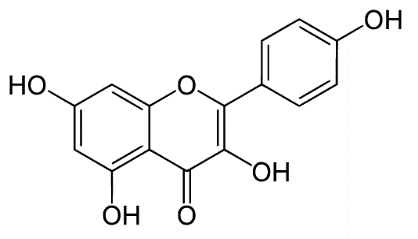FLAVONOIDS OF IRIS SIBIRICA L. GROWN IN VITRO CULTURE
UDC 615.322:582. 579.2:581.192
Abstract
The aim of this study was to evaluate the effect of 6-benzylaminopurine (BAP) separately and in interaction with auxins on the change in the qualitative and quantitative composition of flavonoids in the raw materials of regenerating plants Iris sibirica L. Cambridge grade in comparison with aeroponic and intact raw materials using the method of high-performance liquid chromatography.
Raw materials of I. sibirica Cambridge variety obtained in vitro culture had a richer qualitative composition of flavonoids than intact plants. The dependence of the accumulation of flavonoids on the concentration of 6-benzylaminopurine in nutrient media was noted. The presence of 13 compounds was observed in extracts of 70% ethyl alcohol from regenerating plants grown at the lowest concentration of BAP (1.0 µM) within the experiment. In quantitative terms, the flavonoid apigenin was maximally determined on a medium with BAP 1 µM, and kaempferol - on media with BAP 5.0 µM, supplemented with auxins. For a medium with 7.5 µM BAP, the lowest variety of compounds was observed (9) and the lowest kaempferol content. Auxins influenced the synthesis of flavonoids. The amount of flavonoids in all variants of the experiment increased by an average of 13% in the presence of auxins.
The stages of the technological process of obtaining raw materials I. sibirica Cambridge variety on the basis of clonal micropropagation and cultivation in aeroponics conditions allowed to obtain raw materials that do not contain heavy and toxic metals, are not infected with pathogens and pests. With 1 m2 of useful area of aeroponics for 1 year, it is possible to collect 5 times more raw materials than with field cultivation. According to the qualitative composition of phenolic compounds, aeroponic raw materials are identical to intact plants.
Downloads
Metrics
References
Tarakhovskiy Yu.S., Kim Yu.A., Abdrasilov B.S., Muzafarov Ye.N. Flavonoidy: biokhimiya, biofizika, meditsina. [Flavonoids: biochemistry, biophysics, medicine]. Pushchino: Synchrobook, 2013, 310 p. (in Russ.).
Borisova G.G., Yermoshin A.A., Maleva M.A., Chukina N.V. Osnovy biokhimii vtorichnogo obmena rasteniy. [Fun-damentals of biochemistry of secondary plant metabolism]. Ekaterinburg, 2014, 128 p. (in Russ.).
Yin F., Giuliano A.E., Van Herle A.J. Anticancer Res., 1999, vol. 19, pp. 4297–4303.
Yin F., Giuliano A.E., Law R.E., Van Herle A.J. Anticancer Res., 2001, vol. 21, pp. 413–420.
Li R.R., Pang L.L., Du Q., Shi Y., Dai W.J., Yin K.S. Immunopharmacol. Immunotoxicol., 2010, vol. 32, pp. 364–370. DOI: 10.3109/08923970903420566.
Misra U.K., Kalita J. Prog. Neurobiol., 2010, vol. 91, pp. 108–120. DOI: 10.1016/j.pneurobio.2010.01.008.
Zhang T., Wu Z., Du J., Hu Y., Liu L., Yang F., Jin Q. PLoS One, 2012, vol. 7(1), e30259. DOI: 10.1371/journal.pone.0030259.
Sedel'nikova L.L., Kukushkina T.A. Uchonyye zapiski ZabGU, 2016, vol. 11, no. 1, pp. 123–128. (in Russ.).
Shcherbakova L.V., Tikhomirova L.I., Karpitskiy D.A., Martirosyan Yu.Ts. Khimiya rastitel'nogo syr'ya, 2019, no. 4, pp. 327–336. DOI: 10.14258/jcprm.2019046095. (in Russ.).
Tikhomirova L.I., Bazarnova N.G., Bondarev A.A., Ponomarova Ya.V., Mironova S.O. Khimiya rastitel'nogo syr'ya, 2020, no. 2, pp. 249–260. DOI: 10.14258/jcprm.2020026333. (in Russ.).
Murashige T., Skoog F. Physiol. Plant., 1962, vol. 15, no. 4, p. 473.
Tikhomirova L.I., Bazarnova N.G., Il'icheva T.N., Martirosyan Yu.Ts., Sinitsyna A.A. Khimiya rastitel'nogo syr'ya, 2018, no. 4, pp. 235–245. DOI: 10.14258/jcprm.2018043887. (in Russ.).
Kalinin F.L., Sariatskaya V.V., Polishchuk V.Ye. Metody kul'tury tkaney v fiziologii i biokhimii rasteniy. [Tissue cul-ture methods in plant physiology and biochemistry]. Kiev, 1980, 488 p. (in Russ.).
Antipova Ye.A., Kudrikova L.Ye., Tikhomirova L.I., Bazarnova N.G., Cheprasova M.Yu., Kharnutova Ye.P. Khimiya rastitel'nogo syr'ya, 2019, no. 2, pp. 239–250. DOI: 10.14258/jcprm.2019024799. (in Russ.).
Wang H., Cui Y., Zhao C. Mini-Reviews in Medicinal Chemistry, 2010, pp. 643–661. DOI: 10.2174/138955710791384027.
Wahome P.K., Oseni T.O., Masariramba M.T., Shongwe V.D. World Journal of Agricultural Sciences, 2011, vol. 7(6), pp. 692−698.
Zatonskaya L.V., Tikhomirova L.I., Kozlova Ye.O., Petukhov V.A. Khimiya rastitel'nogo syr'ya, 2020, no. 2, pp. 261–270. DOI: 10.14258/jcprm.2020025540. (in Russ.).
Manukyan A. Medicinal and Aromatic Plant Science and Biotechnology, 2011, vol. 5(2), pp. 119−125.
Zagoskina N.V. Novyye i netraditsionnyye rasteniya i perspektivy ikh ispol'zovaniya, 2018, no. 13, pp. 269–273. (in Russ.).
Maggini C., Kiferle C., Guidi L., Pardossi A., Raffaelli A. Acta Horticulturae, 2012, pp. 697−704. DOI: 10.17660/ActaHortic.2012.952.88.
Jamwal K., Bhattacharya S., Puri S. Journal of Applied Research on Medicinal and Aromatic Plants, 2018, vol. 9, pp. 26–38. DOI: 10.1016/j.jarmap.2017.12.003.

Copyright (c) 2021 chemistry of plant raw material

This work is licensed under a Creative Commons Attribution 4.0 International License.

This work is licensed under a Creative Commons Attribution 4.0 International License.
The authors, which are published in this journal, agree to the following conditions:
1. Authors retain the copyright to the work and transfer to the journal the right of the first publication along with the work, at the same time licensing it under the terms of the Creative Commons Attribution License, which allows others to distribute this work with the obligatory indication of the authorship of this work and a link to the original publication in this journal .
2. The authors retain the right to enter into separate, additional contractual agreements for the non-exclusive distribution of the version of the work published by this journal (for example, to place it in the university depository or to publish it in a book), with reference to the original publication in this journal.
3. Authors are allowed to post their work on the Internet (for example, in a university repository or on their personal website) before and during the review process of this journal, as this may lead to a productive discussion, as well as more links to this published work.











